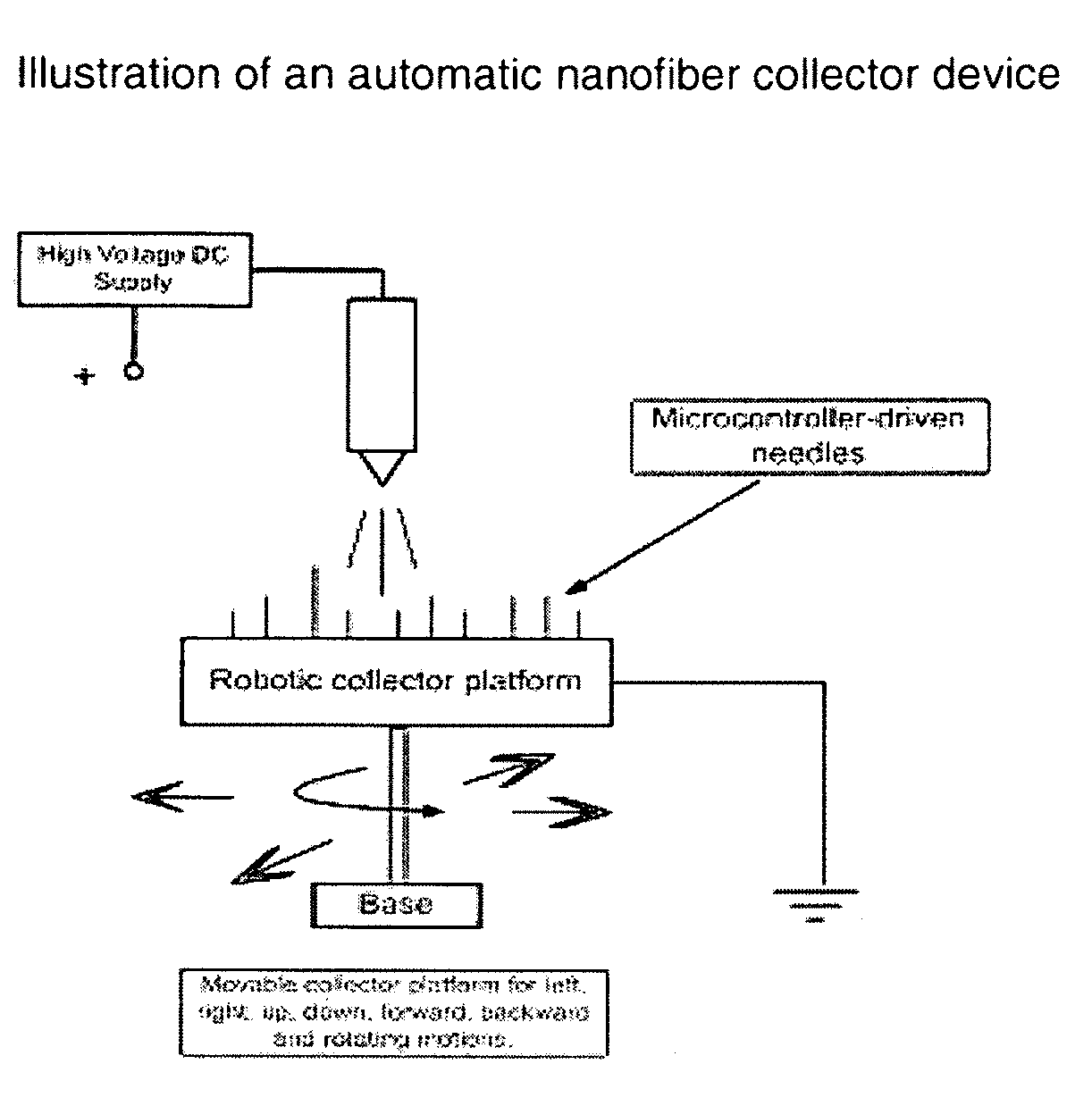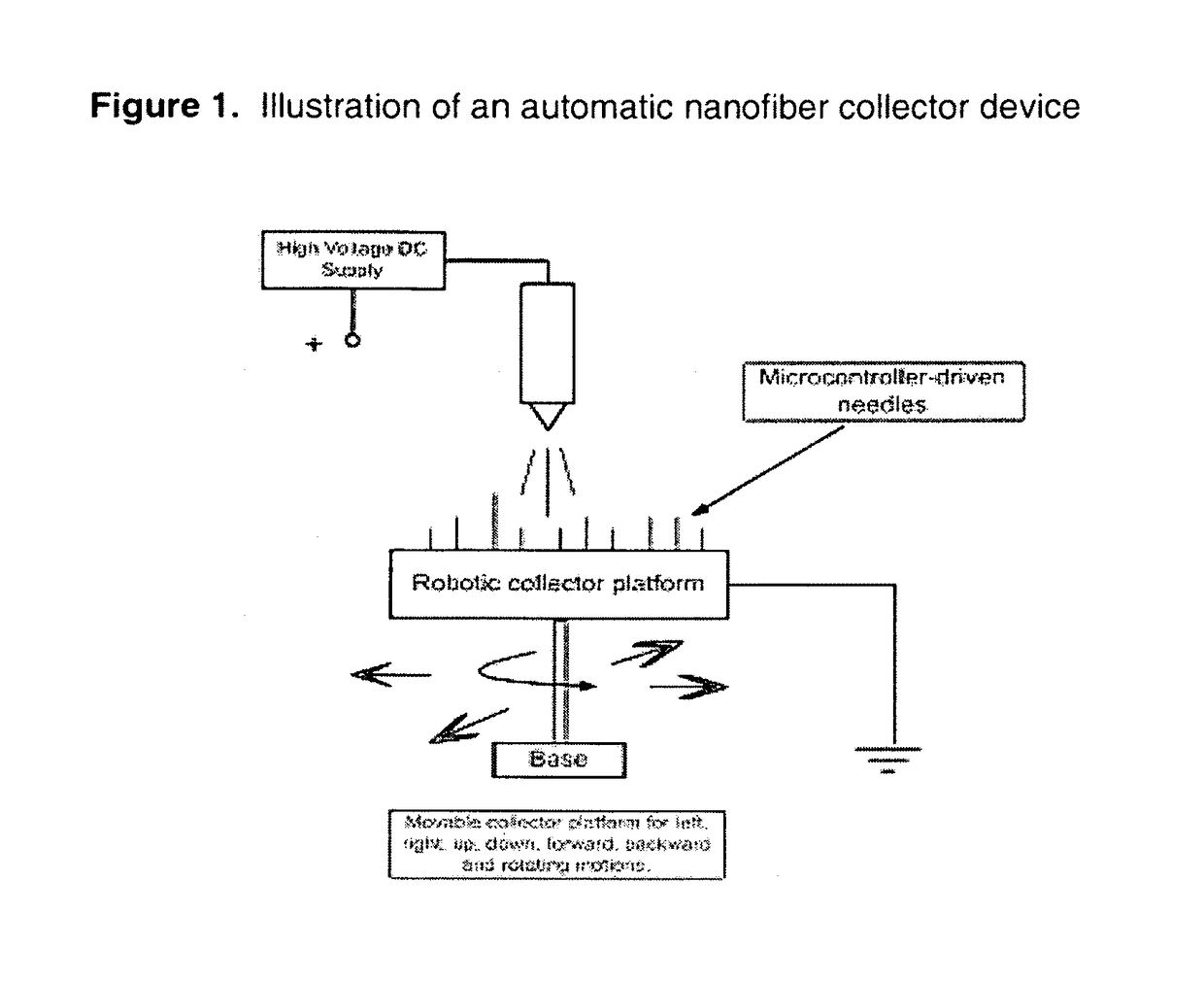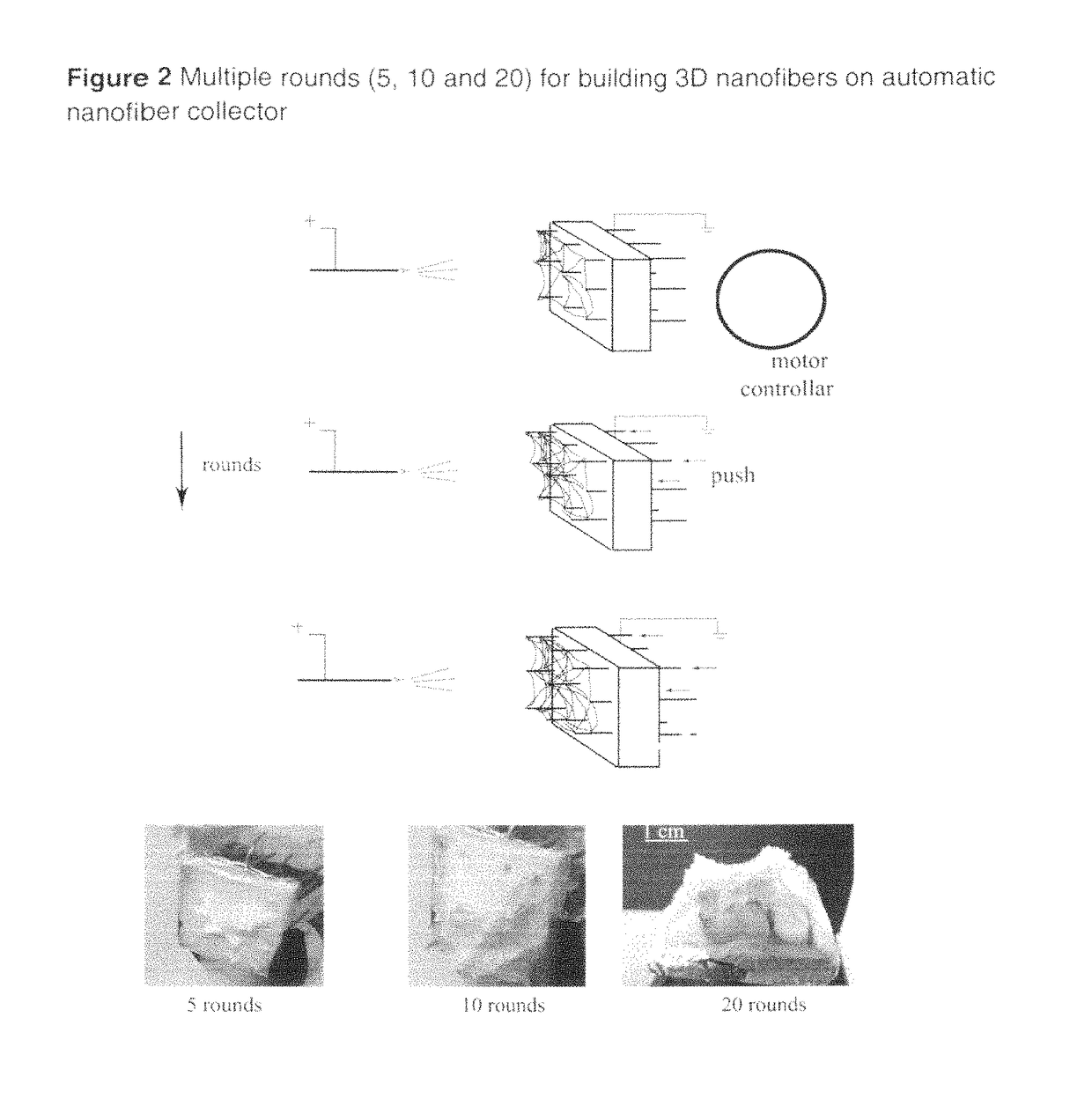Device and method for electrospinning multiple layered and three dimensional nanofibrous composite materials for tissue engineering
a composite material and nanofiber technology, applied in the field of devices and methods for electrospinning multiple layered and three dimensional nanofiber composite materials for tissue engineering, can solve the problems of limiting cell infiltration and growth through the entire layer of nanofiber scaffolds, and the challenge of fabricated 3d nanofiber scaffolds with programmed spatial control of cell deposition
- Summary
- Abstract
- Description
- Claims
- Application Information
AI Technical Summary
Benefits of technology
Problems solved by technology
Method used
Image
Examples
example 1
Description of Automatic Nanofiber Collector Device
[0022]The design of the automatic nanofiber collector device is shown in FIG. 1. This nanofiber collector is consists of (1) a collector platform; (2) a non-conductive device used to fix the collector device; (3) a plurality of electro-conductive wires or needles being pierced through the collector platform with various heights, and (4) the ends of the needles (at bottom) are wired and controlled by a microcontroller, providing forward, stand and backward movements for attached needles.
[0023]This device is specially designed by embedding an array of 3.0 cm long stainless needles in a flat surface (diameter: 3 cm, shell thickness 0.2 cm; Fibre Craft, USA). The terminals of each needle are wired and controlled by micro-controller via a stepper motor. The micro-controller is programmed to control individual needle movement (forward, backward and still at desired moving velocity, 0-10 mm / per minute). The needles are placed at 1 cm inter...
example 2
Preparation of 3D Nanofiber Composites Scaffolds by Co-Electrospinning
[0029]FIG. 3 illustrates the preparation of 3D nanofiber composite scaffold by co-electrospinning. The electrospun nanofiber mesh could wrap granules, cells, nanotubes by loading of biomaterials simultaneously or separately during electrospinning. Alternatively, various types of tissue scaffolds with desired shape can be made by compressive modeling or other molding technology for tissue repair.
[0030]This automatic nanofiber collection device can be used alone (single electrospinning) or by simultaneous incorporating (spray, co-electrospinning or 3D plotting / plasma spraying or other applicable loading methods) of other biomaterials (biopolymers, bioceramics, bio-conjugates, etc.), biomolecules, ions (trace elements), viable cells (stem cells or differentiated cells), to form desired 3D nanofiber matrix composites (Sandwich, layer-by-layer, gradient models, and thereof). The potential applications of this new techn...
example 3
Electrospinning of PCL Nanofibers
[0031]A Polycaprolacton (PCL) mixture (0.2 mg / mL) was prepared by dissolving PCL into chloroform through overnight homogenization. 10 mL of dimethylformamide (DMF) was then added to the mixture and stirred for 3 hours until it was evenly homogenized. For imaging purpose, Calcein fluorescent labeling dye (8 μg / mL) was mixed with the PCL solution to finalize as PCL-calcein solution for electrospinning. The solution was then loaded into a syringe (5 mL, B-D Scientific, Franklin Lakes, N.J.), which made a connection with high purity tubing (INDEX Health and Science, Oak Harbor, Wash.). Attached to the end of the tubing was a blunt tipped (B-D Scientific) 26 G1 / 2 needle (0.6 mm inner diameter). The entire syringe, tubing, needle system was attached to a syringe pump (R-100E, Razel Scientific Instruments, St. Albans, Vt.) with a setting flow rate Q. The needle tip was connected using alligator clips to a high voltage supply (ES40P, Gamma High Voltage Resea...
PUM
| Property | Measurement | Unit |
|---|---|---|
| length | aaaaa | aaaaa |
| length | aaaaa | aaaaa |
| speed | aaaaa | aaaaa |
Abstract
Description
Claims
Application Information
 Login to View More
Login to View More - R&D
- Intellectual Property
- Life Sciences
- Materials
- Tech Scout
- Unparalleled Data Quality
- Higher Quality Content
- 60% Fewer Hallucinations
Browse by: Latest US Patents, China's latest patents, Technical Efficacy Thesaurus, Application Domain, Technology Topic, Popular Technical Reports.
© 2025 PatSnap. All rights reserved.Legal|Privacy policy|Modern Slavery Act Transparency Statement|Sitemap|About US| Contact US: help@patsnap.com



